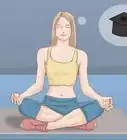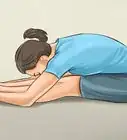This article was co-authored by Atthena Breitton, E-RYT 500. Atthena Breitton is a Yoga Alliance E-RYT 500 and Continuing Education Provider. She is the Founder & Principal Teacher of AtthenaYoga, a boutique yoga and meditation studio in New York City. She has been teaching since 2015, and some of her clients include NFL football player, Jordan Matthews, and Hip Hop Rapper, Lil Yachty. In addition to her studio, Atthena teaches and lectures around the city at major corporations such as Facebook, Ernst & Young, HSBC, U.S. Bank, and WPP. Atthena follows the path of Bhakti Yoga, a path of selfless love, devotion, and service to the Divine. Atthena holds a BS in Economics with concentrations in Finance and Management from the University of Pennsylvania.
There are 9 references cited in this article, which can be found at the bottom of the page.
This article has been viewed 14,246 times.
Tantric yoga focuses on spirituality and mental clarity. This is not as physically-demanding as other forms of yoga, but usually requires more concentration. Many tantra poses look like normal yoga poses, but the difference is how you concentrate on your chakras and focus on connecting your body and mind.[1] You can also do tantric yoga with a partner to build connection and intimacy. If you want to see all that tantric yoga has to offer, then you can get started right now!
Steps
Tantra Techniques
-
1Focus on your chakras while you're stretching or meditating. Tantric yoga is more about spiritual balance than physical training. The main way to bring your mind and body into balance is concentrating on your chakras, or 7 specific energy points along your spine, while you're practicing. No matter which pose you're holding, focus on different chakras to get the real tantra experience.[2]
- The chakra locations are the base of your spine, the top of the sacrum (just above your tailbone between your hips), behind the navel, between your shoulder blades, in your throat, between your eyes, and the top of your head. Spend some time focusing on each one during your routines.
- You can focus on multiple chakras while you're holding the same position. It will look the same from the outside, but you'll be balancing your spiritual energy.
-
2Repeat a mantra to focus your mind. Mantras, or spiritual words, are a big part of tantrism. In general, repeat a mantra every time you release a breath. This focuses your energy and concentration.[3]
- The most common mantra is “Om,” but there are also other Hindu phrases you could use.
- In some poses, you can repeat a mantra every time you focus on one of your chakras.
- Yoga is a great way to strengthen your body, but it also allows you to really tap into your soul and purify your consciousness.[4]
Advertisement -
3Maintain eye contact with your partner to build intimacy. If you're practicing tantra with a partner, then the main focus is building a connection between the two of you. While eye contact isn’t required when you’re working with a partner, it’s very good for building that connection. In all the partner poses where you’re facing each other, look into each other’s eyes for maximum intimacy.[5]
- Eye contact is especially important if you’re working with a romantic partner.
-
4Meditate to complement the yoga. Yoga is only one part of tantrism. Mindfulness meditation is also an important aspect of building the connection with yourself. Sit in a cross-legged peace position, and close your eyes. Breathe deeply and focus on your thoughts. Try your best to clear your head of distractions and achieve control over your mind.[6]
- You can meditate before or after a yoga session as well. This could help build your relaxation and mindfulness.
- You can also meditate with your partner.
Individual Poses
-
1Relax in the peace pose. This is a good starting position to release your stress before a yoga session. Sit cross-legged on a mat with your knees lower than your hips. Put your hands into the gyan mudra position by touching the tip of your index fingers to the tip of your thumbs, with the other 3 fingers outstretched. Rest the tops of your hands on your knees. Then take 5 deep breaths and release them to relax your body and mind.[7]
- Remember to breathe and focus on your chakras while you're in this pose.
- If you can’t get your knees below your hips, then elevate your hips by sitting on a mat or block.
- You could also use this position as a meditation pose.
-
2Loosen your back and sides with a prana mudra stretch. While still sitting in a cross-legged position, press your fingertips together in between your legs to make a downward-facing triangle with both hands. Inhale and slowly raise your arms above your shoulders with your palms facing up. Lower them slowly and repeat the motion 10 more times.[8]
- This is also a good position to use while you’re meditating.
- Try repeating a mantra every time your hands pass one of your chakras to focus your energy.
-
3Stretch upwards with a sun salutation position. Start off in a mountain pose at one end of your yoga mat. For a mountain pose, stand straight up with your feet together, dig your toes into your mat, and flex your back and shoulders backward. Extend your arms up to stretch your back and shoulders. Then bend down, keeping your arms outstretched and your head facing forward. When your hands reach your legs, roll your head forward to lengthen your spine. Raise yourself up slowly and repeat this 3 more times.[9]
- You might not be flexible enough to reach all the way down to your legs or feet yet. This is okay. You just need some practice to loosen up.
- This is a good position to focus on the chakras along your spine.
-
4Strike a warrior pose to stretch your hips. Stand on the end of your mat and step forward into a lunge with your left foot. Bend your left leg so your knee is over your foot and keep your right leg straight. Put both your hands over your navel, then inhale and lift your arms over your head with your palms facing up. Stretch up as high as you can to open your chest. Then exhale and bring your hands back down. Repeat this 5 times and switch sides.[10]
- You can also do this with a partner. Look at each other and maintain eye contact to build the connection.
-
5Open your heart with a modified table top pose. Start in the table top pose as your starting position. Then put your left hand over your heart and roll your left shoulder backwards to open up your chest and hips. Take 5 breaths, then roll back forward. Switch sides when you re-set yourself.[11]
- If you don’t know how to get into a table pose, get onto the floor on your hands and knees. Make your knees hip-width apart and your hands shoulder-width apart, directly under your shoulders.[12]
- Remember to keep your core tight to maintain balance during this pose.
-
6Finish in a child’s pose. This is a good way to wind down after a yoga session. Kneel down and sit with your feet underneath you. Then bend down forward and outstretch your arms in front of you. Try to get your forehead down to the floor. Hold that position and breathe deeply to relax.[13]
- It’s okay if you’re not flexible enough to reach the floor yet. You’ll build your flexibility.
- You could also use this position for meditation or relaxation.
Partner Poses
-
1Try the hand-on-heart position to build a connection. This is a simple starting position for a partner-based yoga session. Sit in a cross-legged position, facing your partner. Then put your right hand over your partner’s heart, and have them do the same. Sit and breathe deeply, experiencing each other’s energy and focusing on your partner’s heartbeat.[14]
- This is more of a relaxation routine than a stretching one. You could use it as a warm-up, or to build a connection with your partner.
- While partner tantra poses are traditionally done with romantic partners, this isn’t a requirement. Friends can do tantric poses as well.
-
2Build intimacy with the yab yum position. Have your partner sit on the floor with their legs crossed. Then sit on their thighs and wrap your legs around their back. Wrap your arms around your partner and touch your forehead to theirs. Focus on each other’s breathing and heart rate to build intimacy.[15]
- You can maintain eye contact with your partner, or you can both close your eyes.
- Traditionally, the male partner sits on the floor, but you can practice it however you want.
- This is a common position if you want to try tantric sex as well.
-
3Stretch your legs and back with a boat pose. This is a good way to build balance, flexibility, and connection between partners. Sit facing your partner and reach out to grab each other’s hands. Lift your legs between your arms and touch the soles of your feet to your partner’s. Then outstretch your legs and lift your feet towards the sky. Try to straighten your legs out completely while remaining seated upright.[16]
- This might feel a little awkward when you’re getting used to it. Don’t worry if you can’t fully straighten your legs yet.
- Try to maintain eye contact with your partner during this position to build a connection.
-
4Relax with a partner child’s pose. This is a simple way to stretch yourselves and build a connection. Get into a normal child’s pose while your partner does the same. Extend your arms out with your left palm facing up and your right palm facing down. Interlock your palms with your partner’s. Hold that pose and feel the connection between you two.[17]
Expert Q&A
-
QuestionIs yoga better for the mind or body?
 Atthena Breitton, E-RYT 500Atthena Breitton is a Yoga Alliance E-RYT 500 and Continuing Education Provider. She is the Founder & Principal Teacher of AtthenaYoga, a boutique yoga and meditation studio in New York City. She has been teaching since 2015, and some of her clients include NFL football player, Jordan Matthews, and Hip Hop Rapper, Lil Yachty. In addition to her studio, Atthena teaches and lectures around the city at major corporations such as Facebook, Ernst & Young, HSBC, U.S. Bank, and WPP. Atthena follows the path of Bhakti Yoga, a path of selfless love, devotion, and service to the Divine. Atthena holds a BS in Economics with concentrations in Finance and Management from the University of Pennsylvania.
Atthena Breitton, E-RYT 500Atthena Breitton is a Yoga Alliance E-RYT 500 and Continuing Education Provider. She is the Founder & Principal Teacher of AtthenaYoga, a boutique yoga and meditation studio in New York City. She has been teaching since 2015, and some of her clients include NFL football player, Jordan Matthews, and Hip Hop Rapper, Lil Yachty. In addition to her studio, Atthena teaches and lectures around the city at major corporations such as Facebook, Ernst & Young, HSBC, U.S. Bank, and WPP. Atthena follows the path of Bhakti Yoga, a path of selfless love, devotion, and service to the Divine. Atthena holds a BS in Economics with concentrations in Finance and Management from the University of Pennsylvania.
Yoga Instructor & Educator Both, but caring for your mind might be even more important. Think of it like a bird in a cage—if you're just caring for your body but neglecting your mind, it's like only polishing the outside of the cage, but forgetting to feed the bird.
Both, but caring for your mind might be even more important. Think of it like a bird in a cage—if you're just caring for your body but neglecting your mind, it's like only polishing the outside of the cage, but forgetting to feed the bird.
Things You’ll Need
- Yoga mat
Warnings
- Don't push yourself if you're not able to hold a certain pose—it can take time to build up the flexibility for even the simplest yoga poses.[19]⧼thumbs_response⧽
References
- ↑ https://isha.sadhguru.org/us/en/wisdom/article/about-tantra-yoga
- ↑ https://www.yogajournal.com/yoga-101/tantra-yoga-7-chakras
- ↑ https://www.yogajournal.com/yoga-101/tap-power-tantra-yoga-sequence-confidence#gid=ci020756a3a00325bd&pid=prana-mudra
- ↑ Atthena Breitton, E-RYT 500. Yoga Instructor & Educator. Expert Interview. 4 March 2020.
- ↑ https://yogapractice.com/blog/everything-youre-dying-to-know-about-tantric-yoga/
- ↑ https://www.yogajournal.com/meditation/think-pieces
- ↑ https://www.gaia.com/article/tantra-yoga-guide-practitioners
- ↑ https://www.yogajournal.com/yoga-101/tap-power-tantra-yoga-sequence-confidence#gid=ci020756a3a00325bd&pid=prana-mudra
- ↑ https://www.gaia.com/article/tantra-yoga-guide-practitioners
- ↑ https://www.yogajournal.com/yoga-101/tap-power-tantra-yoga-sequence-confidence#gid=ci020756a3a00325bd&pid=warrior-1-variation-tantra
- ↑ https://www.gaia.com/article/tantra-yoga-guide-practitioners
- ↑ https://www.yogabasics.com/asana/table-pose/
- ↑ https://www.gaia.com/article/tantra-yoga-guide-practitioners
- ↑ https://yogapractice.com/blog/everything-youre-dying-to-know-about-tantric-yoga/
- ↑ https://yogapractice.com/blog/everything-youre-dying-to-know-about-tantric-yoga/
- ↑ https://yogapractice.com/blog/everything-youre-dying-to-know-about-tantric-yoga/
- ↑ https://www.gaia.com/article/tantra-yoga-guide-practitioners
- ↑ https://isha.sadhguru.org/us/en/wisdom/article/about-tantra-yoga
- ↑ Atthena Breitton, E-RYT 500. Yoga Instructor & Educator. Expert Interview. 4 March 2020.
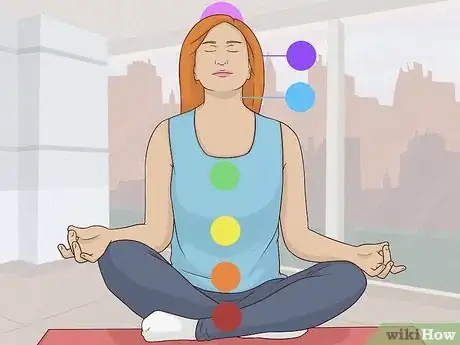
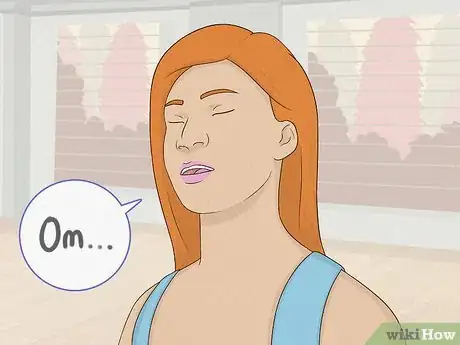


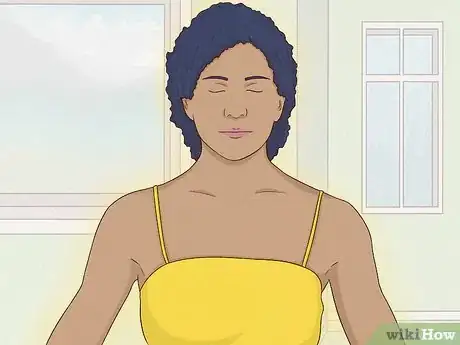
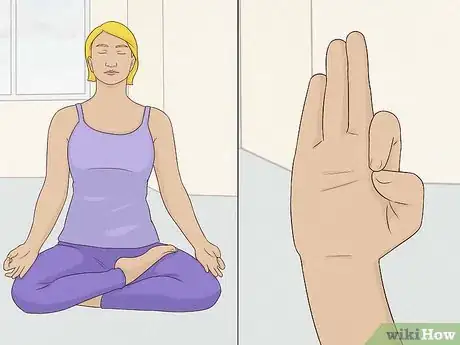
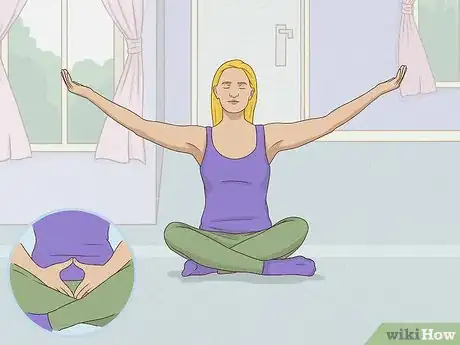
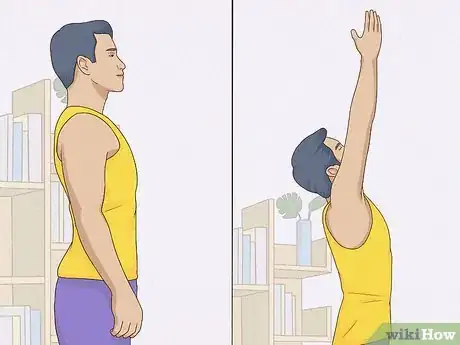
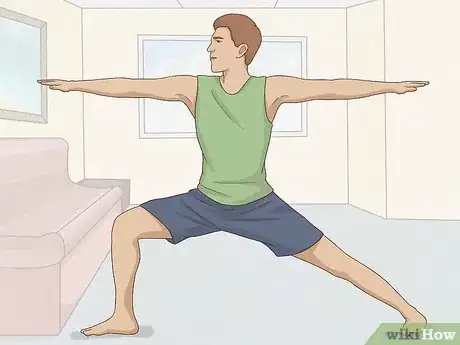
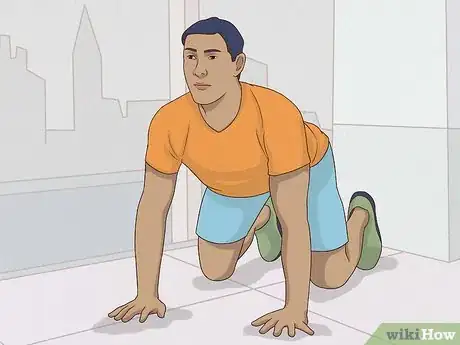

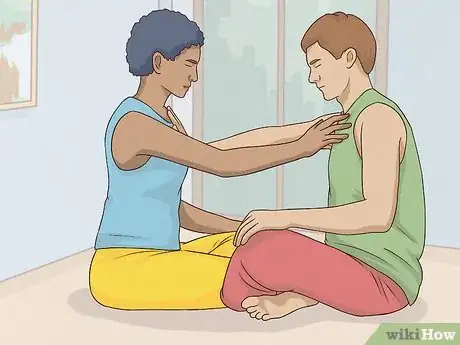
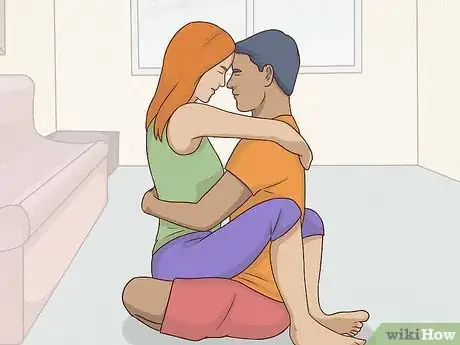

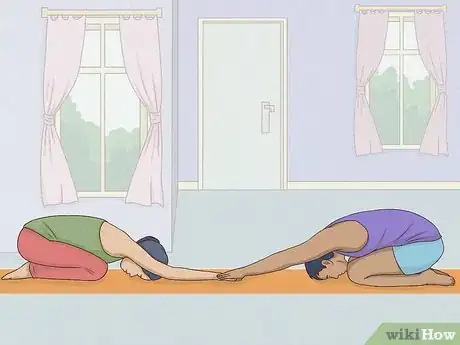



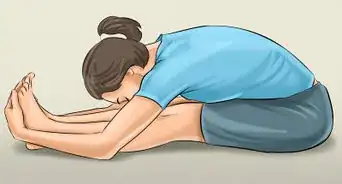





-Step-16.webp)








